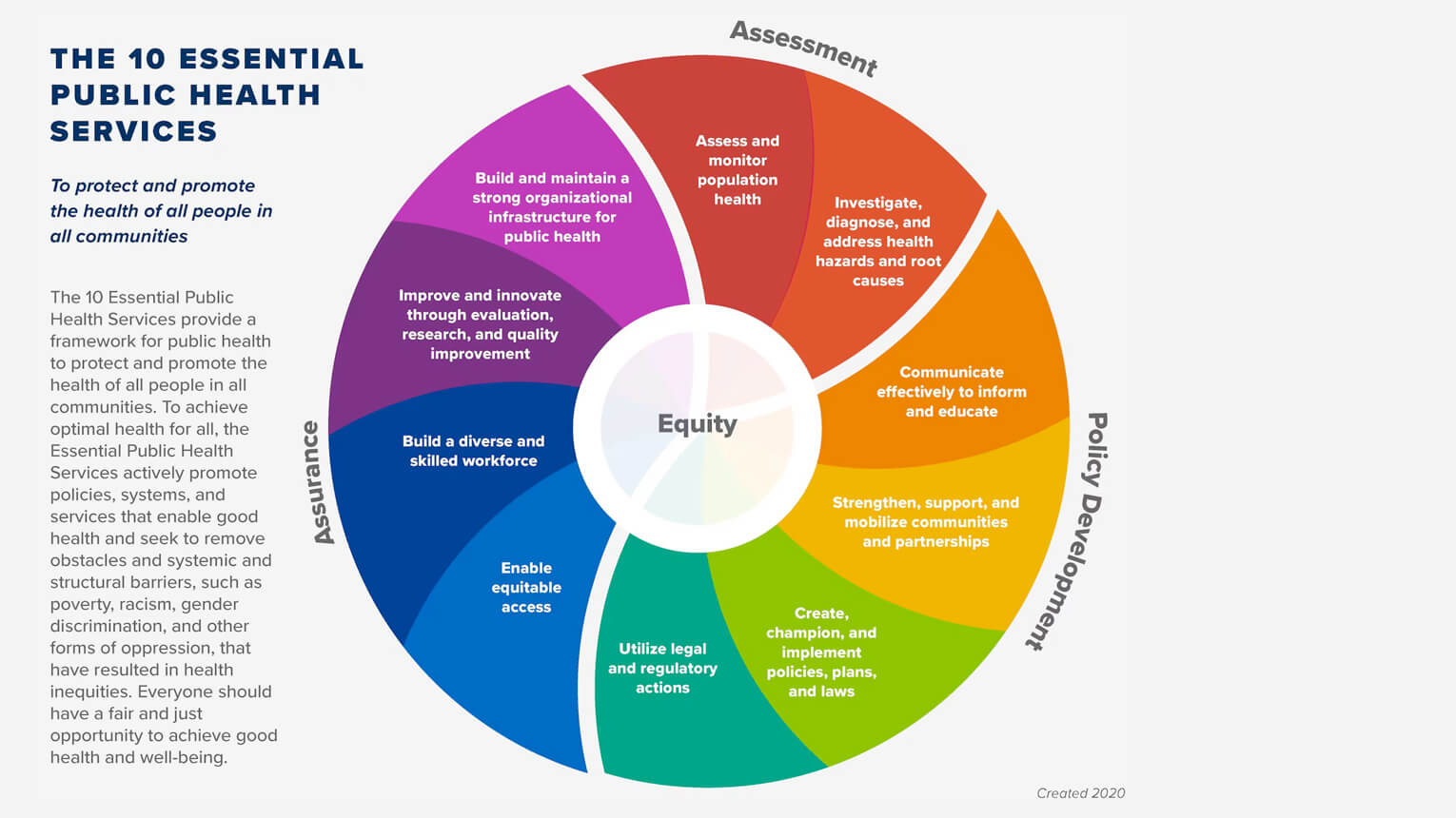
When people think about healthcare, they often picture doctors, nurses, dentists, and other clinical health professionals clad in a white coat or scrubs. But there’s an entirely separate sector of care that has an undeniable impact on the well-being of our community members: public health.
Those who work in the field of public health are responsible for promoting and protecting the health of people and their communities. While a clinician treats patients who are sick, public health professionals strive to prevent those people from getting sick in the first place.
But what does that actually mean? Join us as we break down the core functions of public health and examine just how important they are to community well-being.
Breaking down the core public health functions
Public health professionals work hard to ensure healthy living conditions for the people in their communities. In practice, this involves conducting scientific research, developing evidence-based programs and interventions, educating the public about health-related topics, aiding in policy development, and more.
The industry consists of a wide range of different specialists. Examples of public health careers include statisticians, health educators, outreach specialists, community planners, epidemiologists, occupational health and safety professionals, and public policymakers.
While the duties for each career path will vary, all public health positions operate according to the same mission. This is to fulfill the three core functions of public health: assessment, policy development, and assurance. These have become the guiding principles that define public health careers, as they all work toward the goal of achieving health equity.
A task force of public health experts, leaders, and practitioners, as well as experts from federal agencies like the Centers for Disease Control and Prevention (CDC), developed this well-recognized framework to outline the public health activities all communities should undertake.
Further, the CDC’s 10 Essential Public Health Services provide a more detailed framework for what this should look like in practice. Consider the following outline:




